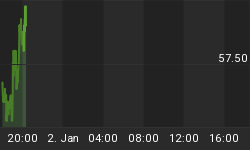Uranium Sector - Still the Best Performer
A spike in activity often comes at the top of a bull market cycle or before a long consolidation period in prices. From this point of view, there seems to be a number of warning signs emerging in the uranium sector:
- Uranium futures started trading recently on NYMEX, recognizing uranium as an important commodity
- Global Uranium Fund and fund warrants (TSX: GUR.UN, GUR, GUR.WT) were recently unveiled
- Prices for yellowcake have risen steadily for 47 months without a single downtick, and now uranium prices have finally had a hiccup falling by $3 per pound.
- The RSG Uranium Index is up over 100% and the Exploration II Index is up about 300% over the last 12 months
- At same time, a merger and acquisition wave arrived in early 2007 and the stocks started to turn sharply down in May

Does the recent hyperactivity mean the beginning of the end for the uranium bull market?
Utilities Paying $135/lb of U3O8. How Much are Uranium Miners Willing to Pay?
Let us look at the recent M&A activity in the uranium sector. The total value of the four biggest deals in 2007 is $8.1 billion.
- In February, UrAsia Energy gets acquired by Uranium One (SXR.TO) for $3.1B. Based on the acquisition price, UrAsia's U3O8 resources are valued at about $11/lb or around 13% of the uranium price at the time
- In April, Summit Resources receives a final takeover offer of over $1.0B from Paladin Resources (PDN.TO), effectively valuing its resources at $14/lb or 12-13% of the uranium price at the time
- In June, Energy Metals (EMU) is acquired by Uranium One for $1.5B. The deal values EMU's uranium resources at $7/lb, or just 5% of the uranium price. EMU has a large number of small projects/deposits, which explains a lower takeover price per pound
- Also in June, UraMin Inc. (UMN.TO) entered into a $2.5B friendly cash deal with Areva, placing a value $13/lb for its resources, or about 10% of the uranium price
The value placed by Uranium One, Paladin and Areva on the purchased projects varies based on a number of factors including: resource quality, proximity to production, size of production, geographical location, permitting and environmental issues, required capital expenditures, and other economic factors and synergies.
Based on these factors, the underground uranium resources are valued between 5% and 15% of the uranium spot price. How does this compare to the gold sector acquisition activity?
Greed or Fear?
Looking at a number of recent acquisitions of gold mining companies, we found that dollars paid for the underground gold ounces varies from as little as 14% of gold price to as much as 44%. It appears that on average, gold mining companies are paying more for gold resources in relative terms than uranium companies are willing to pay for the uranium resources. This is despite the fact that uranium mining often requires less capital especially with a more widespread application of In Situ Recovery process (ISR).
One explanation for the premium differences in the uranium sector compared to the gold sector is that the acquirers are not as bullish on the price of uranium as they are on gold. It appears that they are using a very conservative long term U3O8 price of around $75/lb in their internal calculations.
What does this all mean? We believe there is a lot of fear in the uranium sector. As for greed, there is some, especially in the early stage exploration companies, but this is not a cause for alarm for the entire sector.
This also means that the uranium industry has not yet entered into a manic blow-off phase of the bull market. Easy money may be over in the sector, but there is still a lot to be made by carefully selecting the stocks that will be the next acquisition targets.
There are only a limited number of companies that have established resources and defined production plans. Some of them aspire to become significant players in the sector but have insufficient internal growth prospects to meet their objectives. Understanding this, they will look to make acquisitions.
Cameco Corp (CCJ), the biggest uranium producer in the world has not made any acquisitions thus far but definitely will in a not-too-distant future. We are certain that selective buying in the sector will continue to bring investors handsome profits.
















